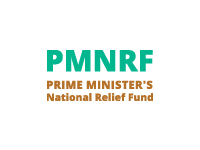MINISTRY OF FOOD AND CIVIL SUPPLIES
(DEPARTMENT OF CIVIL SUPPLIES)
NOTIFICATION
NEW DELHI, THE 16TH NOVEMBER 1988
G.S.R. 1076(E) - In exercise of the powers conferred by section 83 of the standards of Weights and Measures Act, 1976 (60 of 1976), the Central Government hereby makes the following rules, namely:-
CHAPTER 1
PRELIMINARY
1. Short title and commencement-
(a) These rules may be called the Standards of Weights and Measures (National Standards) Rules, 1988.
(b) They shall come into force on the date of their publication in the Official Gazette.
2. Definitions.- In these rules, unless the context otherwise requires:-
(a) 'Act' means the Standards of Weights and Measures Act, 1976 (60 of 1976);
(b) 'co-efficient' means those parameters without physical dimension or ratios of quantities of the same kind, which are necessary for particular measurements or for characterizing properties of substances or mixtures of certain substances.
ILLUSTRATION: Degree of alcoholic strength, percentage of Sugar and hardness of materials, are examples of coefficients.
(c) 'derived units' means units, expressed algebraically in terms of base units, or in terms of base and supplementary units of weights or measures, by means of mathematical symbols of multiplication or division, or both.
Explanation I - Derived units having special names and symbols (such as 'Newton', with symbol 'N') may, by themselves, be used to express other derived units in a simpler way than in terms of the base units of weights and measures.
Explanation II.- The values of dimension less quantities (such as, refractive index, specific gravity, relative permeability or relative permitivity) are expressed by numbers. In such cases the corresponding unit shall be the ratio of the relevant two units and may be expressed by a number;
(d) 'International System of Units' of weights and measures means 'Le System Inter nation d 'Units', with the international abbreviation 'SI', established by the General Conference on Weights and Measures.
Explanation.-'SI' is divided into three classes of units, namely:-
(i) base units, as defined in the Act;
(ii) derived units; and
(iii)supplementary units;
(e) 'permitted units' means the units which though not part of the SI, are recognized and permitted by the General Conference on Weights and Measures for general use along with SI units;
(f) 'Physical constants' means those constants which express the value of physical invariant in a given system of units. These constants include;
(i) those which correlate two or more physical quantities to express a physical phenomenon in quantitative terms independent of any material properties; for example, gravitational constant, velocity of light etc.
(ii) those which correlate the microscopic properties of elementary particles (atoms, molecules etc.) to the corresponding macroscopic properties; for example; Avagadro constant, Faraday constant etc.
(iii) those conversion factors used to express the same parameter in terms of independently defined units for example, the conversion factor relating the astronomical unit or parsec to the metre and atomic mass unit to kilogram.
(iv) those which describe the material properties of pure substances, for example, thermal conductivity, specific resistance, etc.
(g) 'Schedule' means Schedule appended to these rules;
(h) 'SI prefix' means the name and symbol of a prefix used for forming decimal multiples and sub-multiples of SI units, and of such other units as are permitted subject to any exception or modification by the General Conference on Weights and Measures or the International Organization of Legal Metrology, or both, to be used along with the SI units;
(i) 'special units' means units, outside, the SI which are ordinarily used in specialized fields of scientific research. The values of those units expressed in SI units can only be obtained by experiment, and are, therefore, not known exactly.
Explanation: The value of electron volt (the unit of energy) depends upon the experimentally determined value of the charge of an electron.
(j) 'supplementary units' means the units of weight or measure which have been specified as such by the General Conference on Weights and Measures.
Explanation: Supplementary units may be used to form derived units:
(k) 'symbol' means a letter or a group of letters written or combined in the specified manner for the convenient representation of a unit or a group of units;
(l) 'temporarily accepted units' means the unit of weight of measure which have been recognized for the time being by the General Conference of weights and measures for use along with SI units.
CHAPTER II
UNITS OF WEIGHT OR MEASURE
3. Rules of Construction- In these rules, wherever the expression 'weight' has been used as symbolizing the quantity of matter, such expression shall be construed as representing mass.
4. Supplementary Units- The units defined and specified in the First Schedule shall be the supplementary units and the symbol assigned to each such units in that Schedule shall be the symbol of that unit.
5. Derived units- The units defined and specified in the Second Schedule shall be derived units and the symbol assigned to each such unit in that Schedule shall be the symbol of that unit and no other units shall be used for the entities specified in the Second Schedule except for the purpose of scientific of technological research
6. Decimal multiples and sub-multiples of units-
(1) Decimal multiples and sub-multiples of base, supplementary, derived or other units shall be formed, unless otherwise specified, by using either the full name, or symbol of the SI-prefix specified in the Third Schedule.
(2) The SI-prefixes shall be used in the manner specified in the Third Schedule.
7. Permitted units.-
(1) The units specified in the Fourth Schedule may be used along with the SI units, subject to such limitations as are specified in that Schedule.
(2) The multiples and sub-multiples of the units of time and plane angle specified in the Fourth Schedule, shall be formed only in the manner specified in the Schedule.
8. Special units.-(1) The units specified in the Fifth Schedule shall be used in such manner that their values may be expressed in terms of such SI units or combination of SI units or combination of SI units, as may be appropriate.
9. The multiples and sub-multiples of the units specified in the Fifth Schedule shall be formed with the help of SI prefixes specified in the Third Schedule.
(1) Temporarily accepted units:- The unit of weight or measure specified in the Sixth Schedule may also be used, subject to the condition that the Central Government shall, at least once in every ten years after the commencement of those rules, review the need, or otherwise, for the continuance for general use of such units;
(2) Provided that such review may be undertaken earlier by the Central Government either on its own motion or on the basis of a recommendation made by the General Conference on Weights and Measures, or the International Organization of Legal Metrology.
10. Units which should be progressively discontinued.-
(1) Subject to the provisions of sub-rule (2), the CGS (i.e. centimeter, gram, second) units specified in the Seventh Schedule, and the units of weights and measures specified in the Eighth Schedule (being units outside the SI), shall not ordinarily be used except for the purpose of scientific and technological research and no such unit shall ordinarily be used for the purpose of teaching.
(2) The use of the units specified in the Seventh Schedule or, as the case may be, the Eighth Schedule, shall be progressively discontinued so that no such unit is used any field (except in the field of scientific and technological research) after the expiry of a period of ten years from the commencement of these Rules.
(3) While using, for the purpose of scientific and technological research the units specified in the Seventh Schedule, or, as the case may be, the Eighth Schedule, such units shall be used only with the corresponding symbols specified in the said Schedules.
11. Physical constants:- The physical constants specified in the Ninth Schedule and their corresponding numerical values shall be used for all purposes except for the purpose of research connected with the determination of their values.
12. Coefficient and symbol:-
(1) Coefficients include the terms defined and specified in the Tenth Schedule; the symbol assigned to any such coefficient in that Schedule shall be the symbol of such coefficient.
(2) Ordinarily, the coefficient and their respective symbols specified in the Tenth Schedule shall be used.
Provided that any coefficient which is not specified in the Tenth Schedule but which corresponds to any coefficient specified in that Schedule, may be used for a period of five years from the commencement of those rules:
Provided further where any new coefficient added in the Tenth Schedule, any coefficient corresponding to the coefficient so added may be used for a period of five years from the date of addition of such coefficient.
(3) On the expiry of the period of aforesaid five years, the use of coefficient and their respective symbols as specified in the Tenth Schedule shall be compulsory.
Explanation. In the case of a coefficient the use of which is permissible under any of the provisos to sub-rule (2), the symbol, if any, attached to such coefficient may also be used for the same period for which the corresponding coefficient is permitted to be used.
13. Formation of new units.- No new unit or weight or measure shall be formed or used except for the purpose of scientific and technological research, without the previous approval of the Central Government.
CHAPTER III
NATIONAL STANDARDS
14. Custody, maintenance, etc. of national standards of weights and measures.-
(1) The work relating to the realization, establishment, custody, maintenance, determination, reproduction and updating of national standards of weights and measures shall, on the commencement of these rules, be the responsibility of the National Physical Laboratory.
(2) The Central Government may call for such reports from, or issue such directions to, the National Physical Laboratory as it may think fit, in relation to all or any of the matters specified in sub-rule (1).
15. Realization and establishment of the national standards of weights and measures based on SI units:-
(1) The National Physical Laboratory shall discharge the responsibility of realizing and establishing the national standards of weights and measures on the basis of recommendations made from time to time, by the General Conference on Weights and Measures or the International Organization of Legal Metrology, as the case may be.
(2) The standards of weights and measures, so realized and established, shall be self-consistent.
(3) For the purpose of establishing the national standards for the base units other than of mass, the National Physical Laboratory shall:-
(a) prepare or cause to be prepared such objects or equipments, or reproduce such phenomena, or both, as may be necessary for the purpose; and
(b) determine or cause to be determined the value of the national standards as recommended by the General Conference on Weights and Measures and inter compare them, or cause to be inter compared, with the corresponding international standards
(4) For the purpose of deriving the value of the kilogram, the National Physical Laboratory shall arrange the periodical determination of the value of the national prototype of the kilogram and the national prototype of the kilogram and the national prototype of the kilogram, the value of which is so determined, shall be the national standards of mass.
(5) For the purpose of establishing the national standards for the derived and supplementary units the National Physical Laboratory shall prepare such standards, or objects or equipments, or both and determine periodically their value and accuracy in relation to the national standards of base units.
16. Custody and maintenance of prototype standards:-
(1) The national prototype of the kilogram and other standards, equipment and objects shall remain in the custody of the National Physical Laboratory.
(2) The national prototype of the kilogram and every other national standard, standard equipment and objects shall be maintained and realized periodically in accordance with such instructions as the General Conference on Weights and Measures on the International Organization of Legal Petrology or any organization constituted by either of them may issue from time to time.
(3) Where no instructions have been issued by the International Organization referred to in sub-rule (2), any Consultative Committee constituted may compile instructions for the proper maintenance of national prototype, national standards, standards equipment and objects.
(4) The National Physical Laboratory shall arrange, where necessary, to have the national prototype and national standards of physical measurements realized and established in accordance with the recommendations of the General Conference on Weights and Measures and to get them calibrated on intercompared with reference to the appropriate international standards of physical measurements at periodical interval of not more than ten years.
(5) The value of the national prototype and other national standards shall be the value determined by the National Physical Laboratory or assigned by the National Physical Laboratory on the basis of the technical information provided by the International Bureau of Weights and Measures. The National Physical Laboratory shall publish such values periodically but in any case at least once in every five years.
(6) The value determined in accordance with sub-rule (5) shall be deemed to represent the higher obtainable accuracy of such value in the country.
CHAPTER IV
REFERENCE, SECONDARY AND WORKING STANDARDS
17. Standards which are to be fabricated by the Mint.- Unless otherwise specified by the Central Government, all the reference, secondary and working standards of mass and length and secondary and working standards of capacity shall be fabricated by the Metrological Wing of the Government of India Mint in Bombay.
18. Places where reference, secondary and working standards be kept.-
(1) There shall be established by the Central Government, at such places as it may think fit, Reference Standard Laboratories for maintaining such reference, secondary and working standards as may be needed by the Central Government for the purpose of the Act.
(2) The Indian Institute of Legal Petrology or any other Laboratory specified by the Central Government for this purpose may also maintain such reference, secondary and working standards, as may be necessary, for their functioning as a Metrological Laboratory of the level of a Reference Standard Laboratory.
(3) The Government of India Mint at Bombay may also maintain such reference, secondary and working standards as may be necessary for carrying out the work referred to in rule 17.
19. Period and manner of verification of reference, secondary and working standards.-
(1) Every reference standard shall be verified and certified in terms of the National Standards by the National Physical Laboratory, at an interval not exceeding three years.
Provided that in the case of length measures such interval shall not exceed five years.
(2) Every secondary standard shall be verified against the appropriate reference standard by the Reference Standard Laboratory, at an interval not exceeding two years.
(3) Every working standard shall be verified against the appropriate secondary standard, by any of the laboratories where secondary standards are maintained, at an interval not exceeding one year.
20. Maintenance of Reference Secondary and Working Standards.- Every reference standard, every secondary standard and every working standard, irrespective of the place where they are kept, shall be maintained as far as practicable in accordance with the guidelines issued by the National Physical Laboratory from time to time.
THE FIRST SCHEDULE
Supplementary Units
THE SECOND SCHEDULE
Derived Units and Their Symbols
Part I
Derived Unit in relation to Space and Time
Part II
Derived Units in Relation to Mechanics
Part III
Derived Units in Relation to Heat
Part IV
Derived Units in Relation to Electricity and Magnetism
Part V
Derived Units in Relation to Electromagnetic Radiation and Light
Part VI
Derived Units in Relation to Ionizing Radiations
Part VII
Derived Units in Relation to Physical Chemistry and Molecular Physics
THE THIRD SCHEDULE
Name, Magnitude and Symbol of SI Prefixes and principles of use of SI Prefixes.
THE FOUTH SCHEDULE
Units Permitted to be used with Base, Supplementary or Derived Units
THE FIFTH SCHEDULE
Special Units an their Symbols
THE SIXTH SCHEDULE
Temporarily accepted Units
THE SEVENTH SCHEDULE
C.G.S units with special names
THE EIGHTH SCHEDULE
Unit outside the International System
THE NINTH SCHEDULE
Important physical constants
THE TENTH SCHEDULE
Coefficients to be used for the purpose of these Rules









 उपभोक्ता मामले विभाग
उपभोक्ता मामले विभाग










